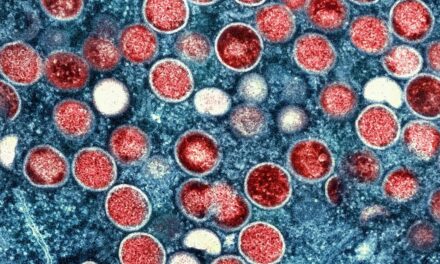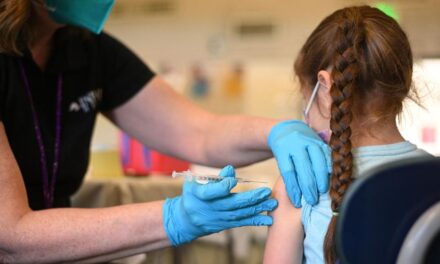
US coronavirus: Study says Covid-19 may have arrived in December
Their study, published last Thursday in the Journal of Medical Internet Research, found a statistically significant increase in clinic and hospital visits by patients who reported respiratory illnesses as early as the week of December 22.
Dr. Joann Elmore and colleagues looked through nearly 10 million medical records from the UCLA Health system, including three hospitals and 180 clinics.
Elmore said she started the search after receiving a number of emails from anxious patients in March through her clinic’s patient portal at UCLA. Patients kept asking if the cough they had in January could have been Covid-19.
“With the outpatients, I found a 50% increase in the percentage of patients coming in complaining of a cough. It came out to over 1,000 extra patients above the average of what we would typically see,” Elmore told CNN.
The number of patient visits to the ER for respiratory complaints, as well as the number of people hospitalized with acute respiratory failure between December 2019 and February 2020, were all up, compared to records from the past five years. The uptick in cases started in the final week of December.
“Some of these cases could have been due to the flu, some could be for other reasons, but to see these kinds of higher numbers even in the outpatient setting is notable,” Elmore said.
Elmore hopes the research shows that real-time data collected on diseases like this could potentially help public health experts identify and track emerging outbreaks much earlier and potentially slow or stop the spread of disease.
Dr. Claudia Hoyen, an infectious disease specialist at University Hospitals Cleveland Medical Center who did not work on the study, said she believes it’s possible Covid-19 may have been in the US much sooner than first realized.
But Kristian Andersen, a professor of immunology and microbiology at Scripps Research, disagreed.
“We know from the SARS-CoV-2 genetic data that the pandemic started in late November / early December in China so there’s absolutely no way the virus could have been spreading widely in December 2019. From the same genetic data we know that widespread transmission didn’t start in the United States until (around) February 2020,” Andersen said in an email.
“The paper is picking up spurious signals and the hospitalizations are more likely from flu or other respiratory diseases,” Andersen wrote.
Parties and virus concerns keep high schoolers from returning to class
Overcrowded parties have forced several high schools to go back to online learning in hopes of staving off Covid-19 outbreaks.
Two of those schools are in Massachusetts, which is reporting fewer cases than last week, and New York, which has maintained an infection rate less than 1% for 38 days. Although the states’ numbers are promising, experts have warned that people attending large gatherings are a serious threat to managing the spread of the virus that has infected more than 6.5 million and killed 195,275 people in the US.
Student parties have already sent colleges and universities scrambling to manage outbreaks, and now high school administrators are working to avoid the same.
A crowded student party “that involved alcohol and complete lack of safety precautions” pushed Lincoln-Sudbury High School outside of Boston to go back to remote learning the first two weeks of school, a letter from the superintendent said. And Pelham High School in Westchester, New York, has extended online learning after two nights in a row of students partying in the woods, the school district announced.
But students’ social lives are not the only cause for concern. The president of the United Federation of Teachers said Monday that New York City is “not making the grade” when it comes to enacting the safety measures needed to reopen schools for in-person learning.
Michael Mulgrew cited insufficient staffing and a two to three day delay in testing results as major roadblocks.
“If you asked me if we are ready to open today, I would say we are not,” he said.
In New York City Public Schools, at least 422,190 students have requested the entirely remote learning option for the fall, according to data provided by the city’s Department of Education — a little over 40% of the more than 1 million students enrolled in the nation’s largest public school system.
Roughly 58% of students plan to return to school buildings as part of a hybrid learning model beginning next week, according to the department.
Parents in the New York City public school system could opt out of the in-person hybrid plan since it was first announced. In August, Mayor Bill de Blasio said 74% of families had said they were planning to participate in in person learning at the time.
The city’s daily Covid-19 indicators are all under desired thresholds, de Blasio said Tuesday.
Schools plan ahead for safe reopenings
As several schools make last minute changes to their plans in response to parties, others are implementing systems ahead of time to respond to changes in the virus.
Kentucky officials outlined a color-coded system Monday to help individual districts determine every week if they should continue with in-person learning based on coronavirus levels in their area.
“If you’re in the red, it means there’s widespread community spread of COVID-19, and if you’re in the red it’s not responsible — it is not responsible — to be doing every day in-person learning,” Gov. Andy Beshear said.
And though students in the Los Angeles Unified School District are still learning remotely, a “report card” will show the number of cases in each school as part of the district’s testing and tracing endeavor, Superintendent Austin Beutner said.
To address childcare concerns, about 3,000 children of essential workers will be able to return to school in groups of six after being tested for the virus, Beutner said.
States cracking down on large gatherings
Some states are doing their part to curb the spread and limit the number of fall and winter infections by cracking down on large gatherings.
Officials from New York City parks and New York University are patrolling Washington Square Park and encouraging personal protective equipment use after two back to back weekends of parties with NYU students.
After the first weekend gathering, Gov. Andrew Cuomo criticized the city’s police and the university officials for not taking firmer action to stop the parties.
NYU has instructed all residents and employees the Rubin Hall dormitory to quarantine until at least Tuesday night after the diagnosis of six positive cases out of roughly 400 students living in the building, the university announced in its latest campus update.
“Out of an abundance of caution, we are also retesting all residents of Rubin Hall (and employees, too), and instructed them on Saturday to begin quarantining until at least Tuesday night,” the university said.
NYU has reported a total of 65 cases since August 1, according to the school’s coronavirus dashboard — an overall positivity rate of .19%. The school has reported 48 cases in the most recent 14-day period, a positivity rate of .31%.
The University of Missouri in Columbia has expelled two students and suspended three others for violating the school’s Covid-19 rules, including “requirements that COVID positive individuals isolate and comply with social distancing requirements,” the university said Tuesday.
“These students willfully put others at risk, and that is never acceptable,” Chancellor and UM System President Mun Choi said in a statement, without elaborating on their alleged actions.
“We will not let the actions of a few take away the opportunity for in-person learning that more than 8,000 faculty and staff have worked so hard to accomplish for the more than 30,000 MU students.”
MU has referred roughly 470 students to the Office of Student Conduct for possible Covid-19 safety violations since August 16, and 11 student organizations are currently under investigation.
MU has 332 active cases among students, according to the university dashboard — down from 700 active cases earlier this month. The school has reported more than 1,300 cases since August 19.
On Monday, the University of Arizona — in accordance with the local county health department — strongly urged students to shelter in place until September 30, following an increase in positive Covid-19 cases.
Exceptions include obtaining food, attending work, seeking medical treatment and going outside where social distancing is possible.
The school limited in-person instruction to “essential courses” only until September 27.
The University of Arizona reported 261 positive Covid-19 tests on Monday, according to the school’s coronavirus dashboard, and has seen roughly 1,400 cases since July 31.
Pennsylvania appealing court ruling on large gatherings
In the face of possible fall and winter resurgence, Pennsylvania Gov. Tom Wolf’s office is appealing a federal court ruling that keeps the state from banning certain types of large gatherings.
The state has instituted measures against indoor gatherings of more than 25 people and outdoor events with more than 250 people to stop the spread of coronavirus.
The action is used by many governors across the US, said Wolf’s press secretary Lyndsay Kensinger, and continues to “save lives in the absence of federal action.”
Connecticut has also had ordinances in place to prohibit large gatherings and require face masks in the time of coronavirus, but now law enforcement will have the authority to impose fines to enforce them, Gov. Ned Lamont announced Monday.
People not wearing masks can be fined $100. Organizers of large gatherings can be fined $500, with those attending fined $250, Lamont said.
Despite the importance of masks to halting the spread, White House Coronavirus Task Force member Dr. Anthony Fauci said a national mask mandate “probably would not work.”
Speaking at a news conference with Vermont Gov. Phil Scott on Tuesday, Fauci said, “There is such a degree of variability of accepting mandates throughout the country.”
Fauci said issues arise when a majority of the population in an area do not agree with the mandate — and that begs the question: How do you enforce the mandate?
Anything that puts an “authoritative statement to the citizenry often is met with a considerable amount of pushback,” he said.
Dr. Mike Ryan, executive director of the World Health Organization’s health emergencies program, said in Geneva that countries approaching winter will have to choose between having bars and nightclubs open or schools in session.
“We have to sustain pressure on this virus, we have to reduce transmission at community level in order to lower the risk to those older and vulnerable people and to maintain an environment in which our children can continue to attend school,” Ryan said at a briefing.
“So, what is more important? Are children back at school? Are the nightclubs and the bars open?” he said. “I think these are decisions that we have to make in coming into the winter months.”
CNN’s Elizabeth Joseph, Elizabeth Hartfield, Anna Sturla, Naomi Thomas, Laura Ly, Jen Christensen, Jennifer Feldman and Stella Chan contributed to this report.


















